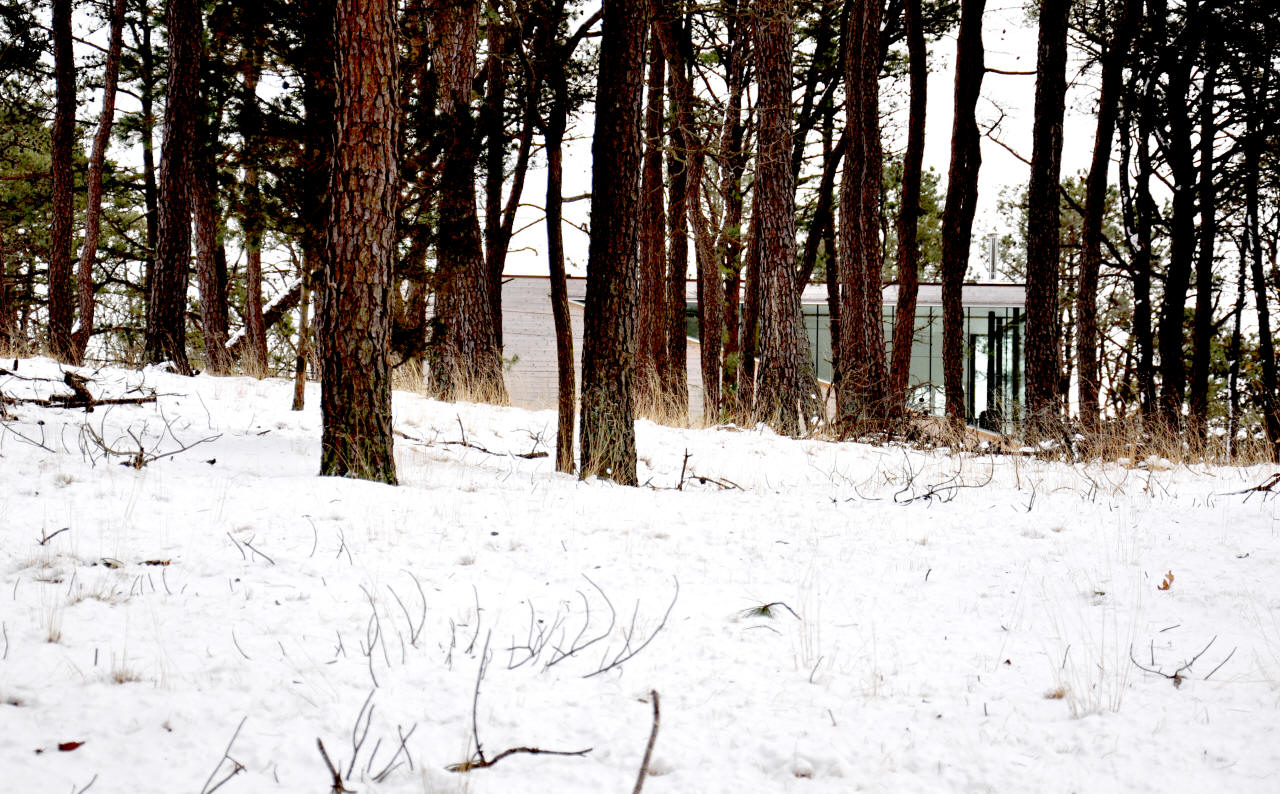

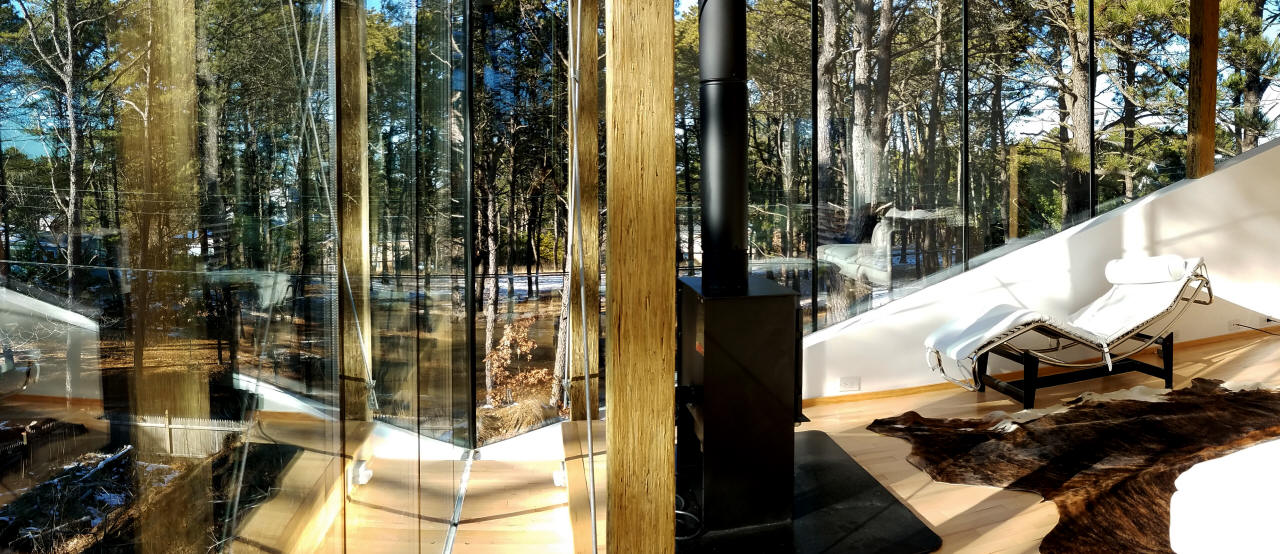
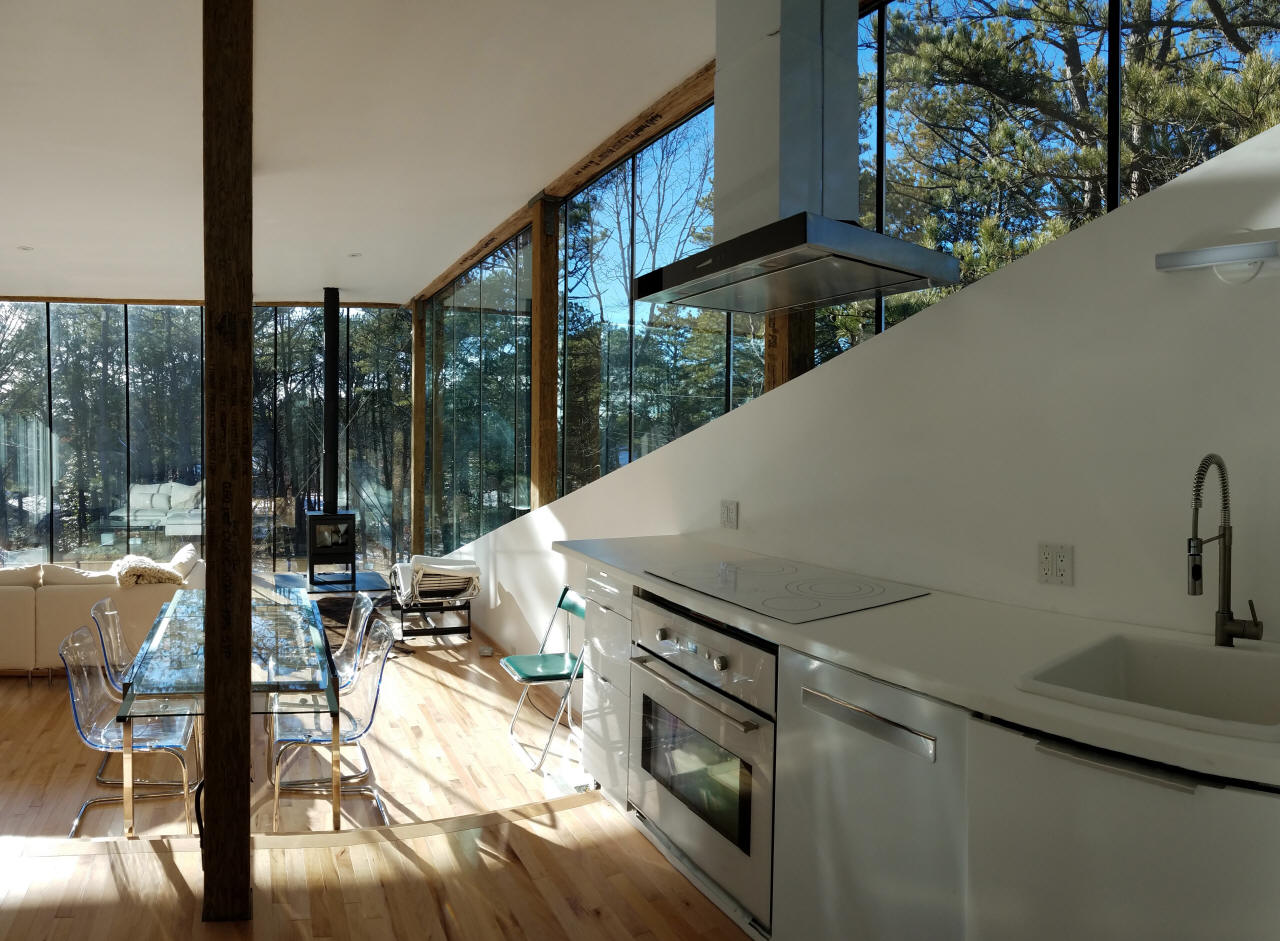
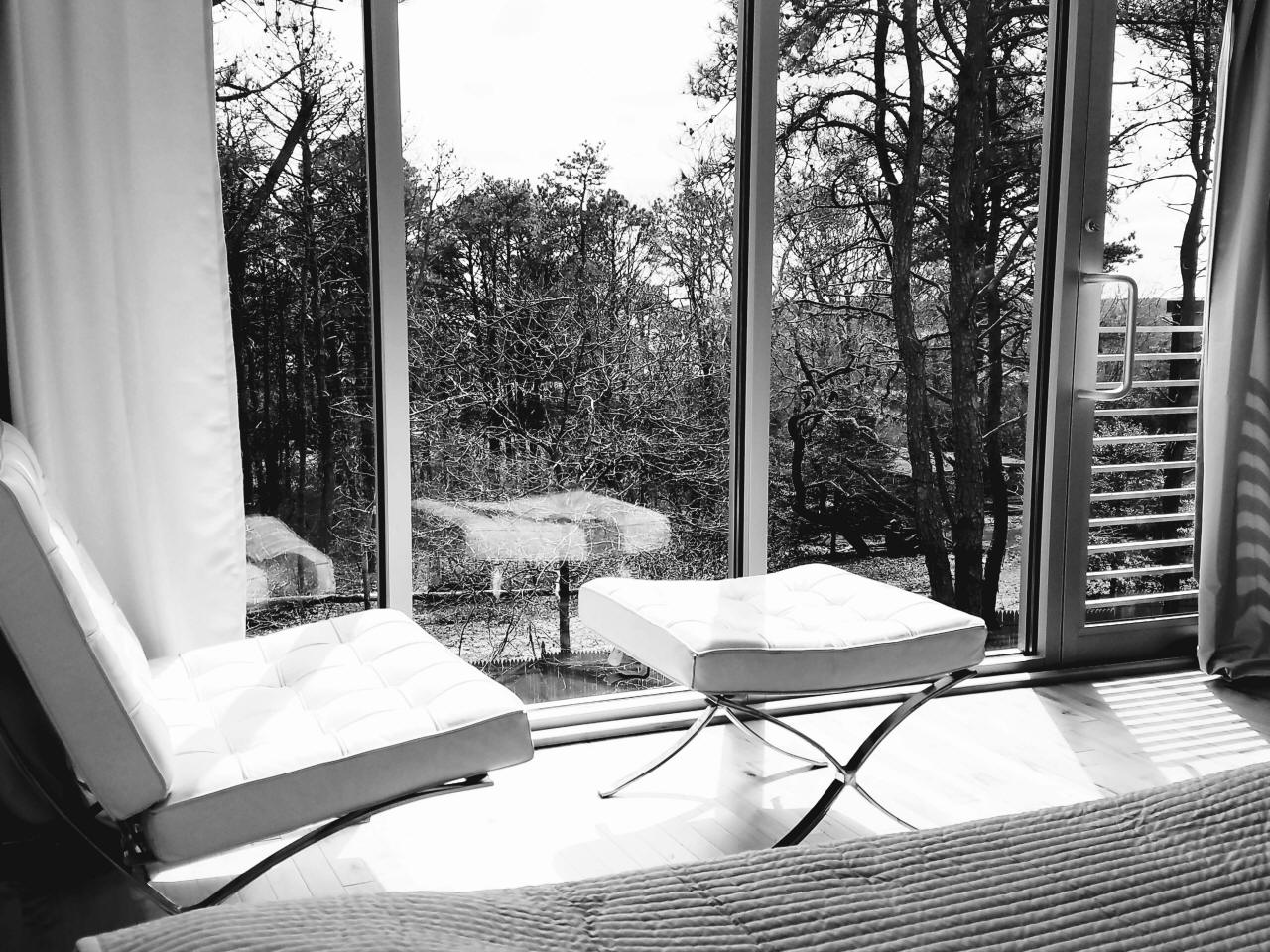
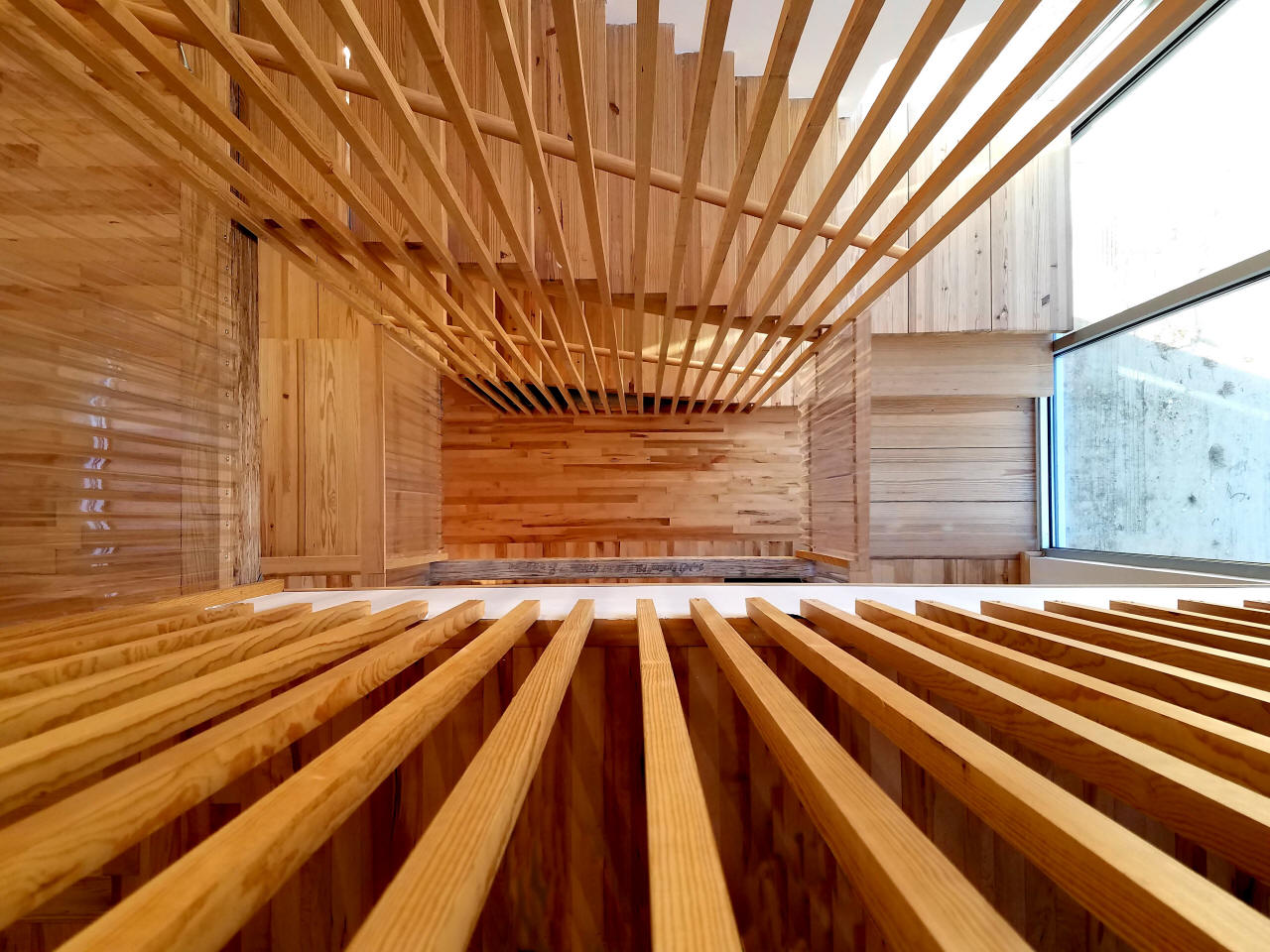
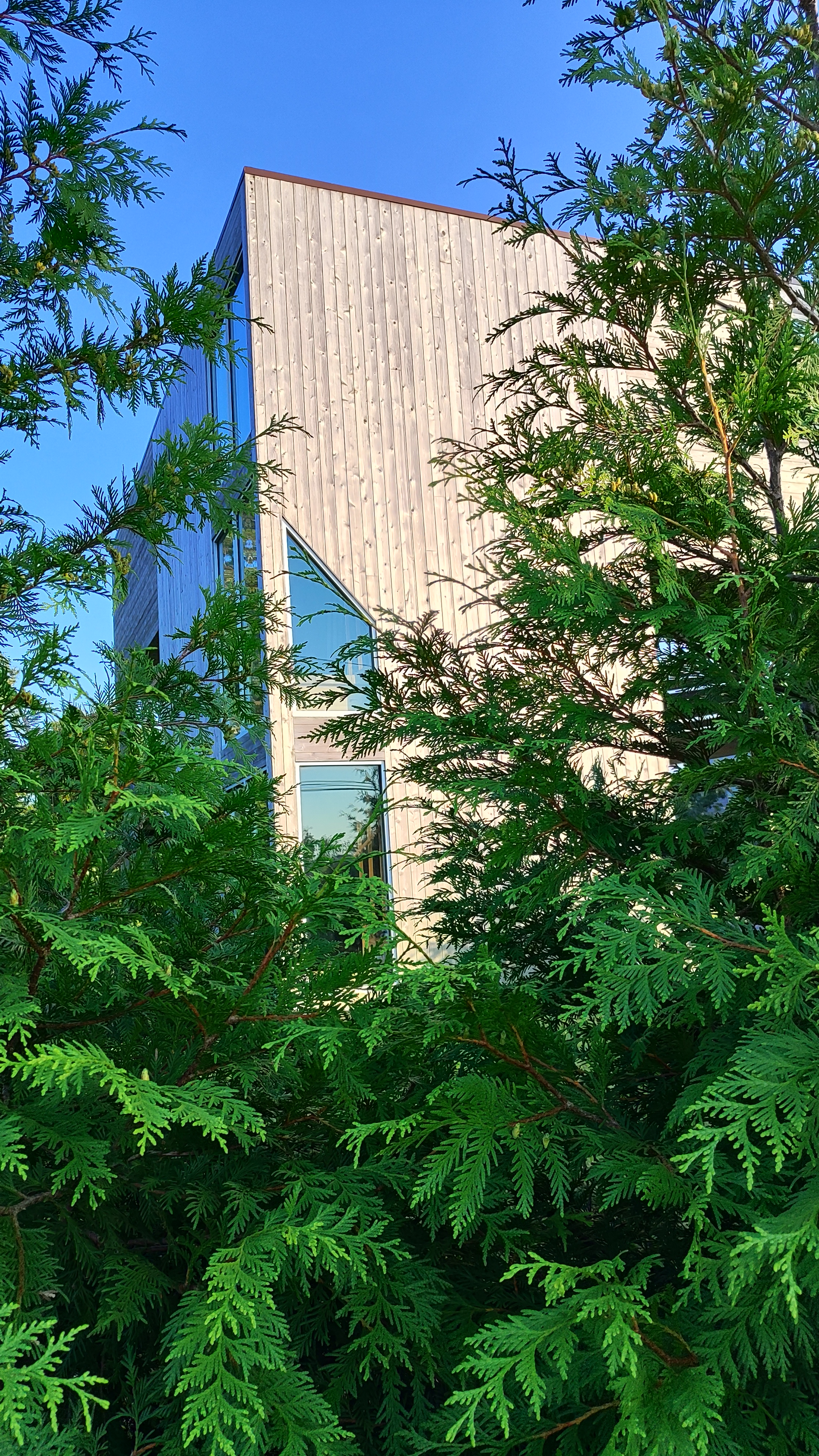
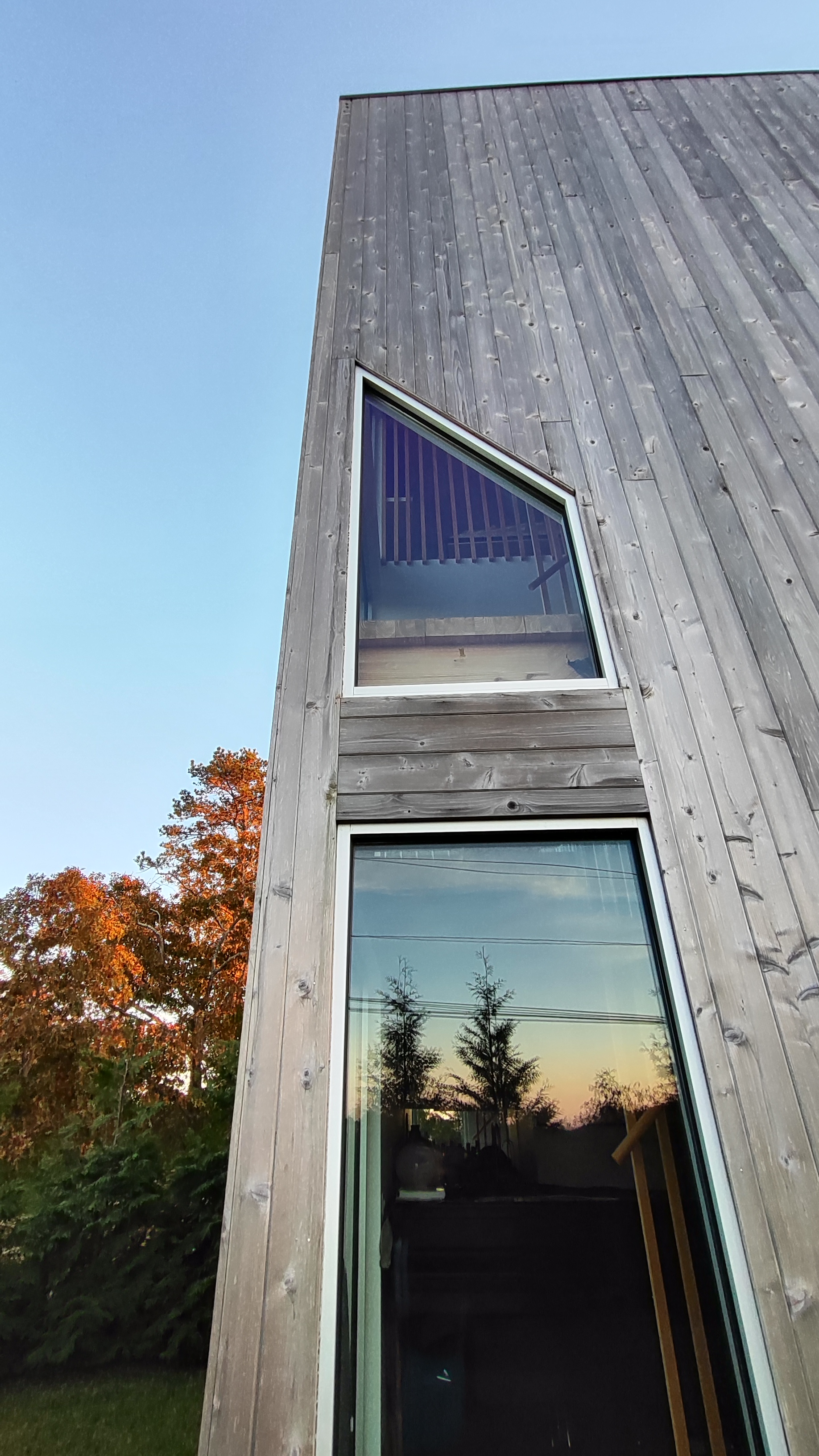
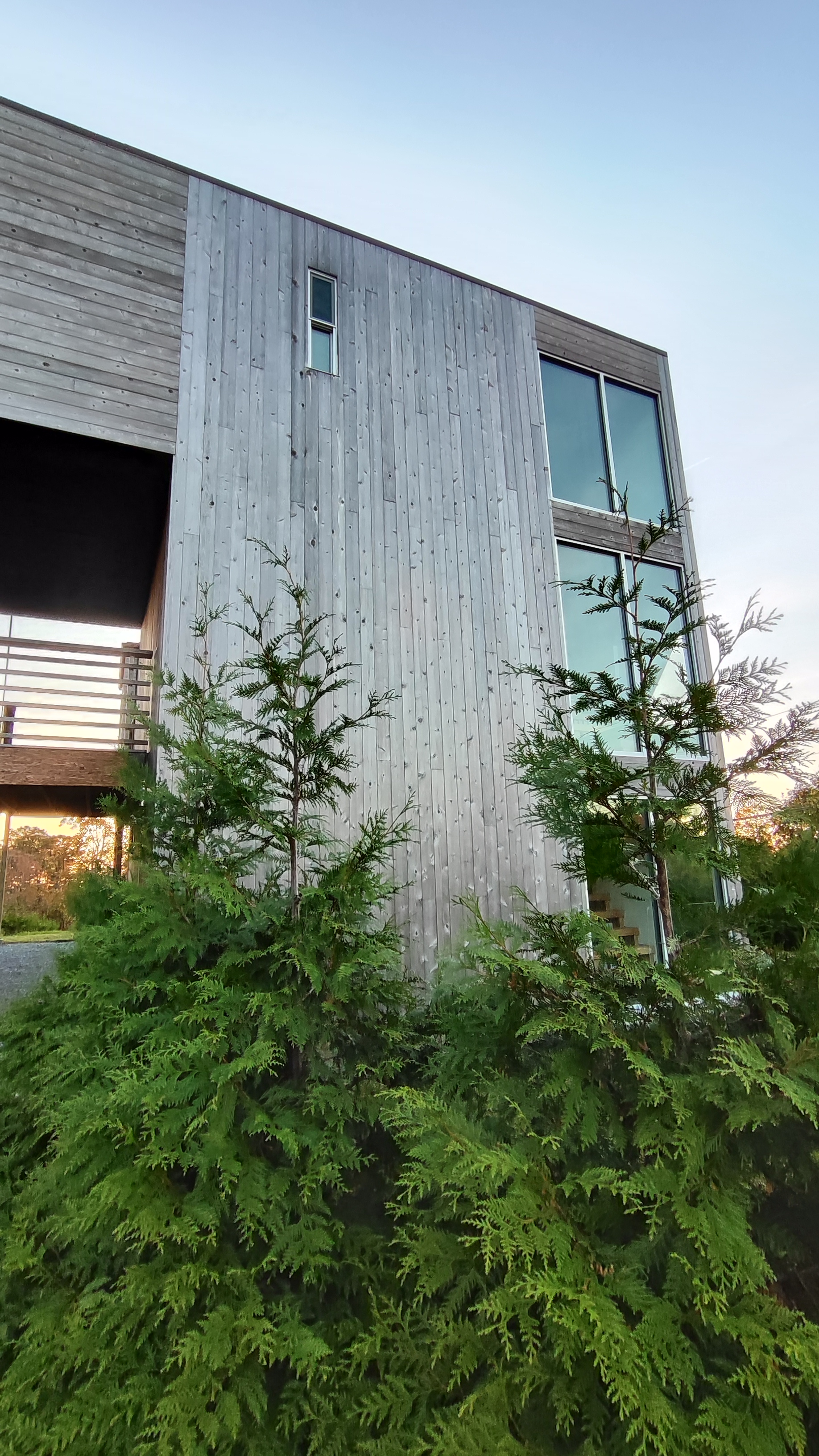
House
II version C:
2017:
e-Architects completed pahse I construction on House II version C in Shinnecock
Hills, Southampton, New York
ENDLESS HOUSE: House II Version C proposes a series of spatial loops that aim to
activate a multidinemsional space-environment, based on the researched complex
mathematical surface topological properties of
House II Version B by
e-Architects.
TYPOLOGY | TOPOLOGY:
House II version C is a house project that integrates
multiple architectural typologies within a single topology. The
theory of the project is based on the motivation and displacement of the
historical nine square grid organizational problem in which center and periphery
as well as other spatial organizational questions emerge.
The house initially
proposes three distinct programmatic areas: a tower loft, a L shape
living loft, and a separate independent loft-studio. Each of these three space
typologies have independent exterior access, adding flexibility to the hybrid
housing model. They are both interconnected as a single house or they can be
accessed independently from the outside, adding flexibility and independence to
the typologies and their living experience as well as its relationship to the
outside, the landscape, and the environment. These three discrete typologies are then displaced topologically into a single
looping space through a ramping element. These possible loops-spaces
aim to address problems of multidimensionality. Corner and center spaces become
first clear typological references that are then displaced by creating
continuous fluidity with each other. Additional center-periphery continuities
will be created in the several future phases of the house addressing the Generic
Coordinate Space displacing the three Cartesian planes. The space of the house challenges
cognition, orientation and bodily affection with a unique
architectural aesthetic. The house diagram is thought to continuously grow,
displacing increasingly both its origination point (the tower) as well as its
surrounding spaces (frames and landscapes). This house integrates
interior and exterior intermediate spaces in a singular looping
continuously differentiated surface-structure aiming to address
problems of infinity variations in its possible experiences, activating an
endless house problem.
TOWNSHIP CODE:
House IIC was granted a unique Code Variance after reviewing with the
Southampton Township multiple relationships between the form of the house and
the form of the frame of the site.
SPACE-ENVIRONMENT |
ECOLOGY EFFICIENCY, FLUID DYNAMICS:
The modeling for HOUSE IIC is also informed by fluid dynamic
simulation, integrating interior and exterior spaces and
its surrounding environments. The model defines a construction of a
space-environment detached from the ground.
The house has achieved some of the highest marks in energy
efficiency levels in the Hamptons, NY for energy preservation,
energy efficiency and minimum use of heating. This was measured
using HERS modeling, fluid dynamics energy modeling and Energy Star
levels matched with Green Building Code. The practicality of
these levels was achieved by strict engineered strategies combining:
air ventilation, air circulation, air recycling volumes per minute,
sun exposure, glass exposure, glass ultra violet filtering layers,
double glass panels, higher than normal insulating
materials, coordinating glass-sun exposure with the form of the
house, modeling air flow circulation in relation to openings and air
volume changes, among other technical aspects that informed the
design.
There are only three moments of relationship with the exterior, and when
the three openings are coordinated, the three-orientation typology
of the house (X,Y,Z) captures wind patterns in any of these three
directions. These breeze patterns are accentuated once they enter
the house by air pressure and air temperature differentials between
the three distinct house areas. Each typology in the house has a
distinct temperature, humidity and air movement. The glass and its
orientation, the materials implemented and mostly important the
design articulation between the three building types, make this
house a model for energy distribution and air flow circulation for
temperature control.
LANDSCAPE
DESIGN: the landscape design of the house both expands and
critiques the house spatial structure. By expanding the
surface topologies and voids of the three units, the
landscape expands three voids to wrap and contain the site
inverting figure and void spaces. Instead of framing the
site, the landscape inverts the site containment through the
voids of the house spaces. The house develops three
interdependent gardens for each of the typologies of the
house in continuity with the house topologies. The landscape
consists of 200 trees that work out hedges-walls defining
the garden structure. The three "gardens" consist of one
courtyard and two gardens. Each garden serves one typology
of the house and separate independent entrances to the three
distinct house structures and living typologies. The gardens
expand and contract in relation to the house voids. When
contracting the gardens work with perspectival distortions
of space-time perception.
CONSTRUCTION: RECYCLED MATERIALS: The construction system plays and integral part in the logic of the
architecture of the house. An innovative parallam system with
reconstituted wood fibers offers smaller structural sections and a
unique relationship to nature through materials. While
complying with environmental sensibility, the house proposes a
unique aesthetics. Most of the materials in the house are reclaimed
materials, reconstituted materials and recycled materials.
CREDITS:
House II,
2013-2014. Cartopological Cartesian Topology © space.
e-Architects; Design Lead and Research: Pablo Lorenzo-Eiroa.
Architect of
Record: Meredith Bostwick-Lorenzo Eiroa / Eiroa Architects,
PC.
Research Assistant: Luo Xuan,
Pedro Joaquin.
Structural Engineer Aamer
Islam, PE
www.axisdgi.com; Contractor: Hamptons R.M.R. (Atilla Ozturk and
Ron Gaines)
www.hamptonsrmr.com; eiroa
architects, PC NY architect of record.
More information
upcoming